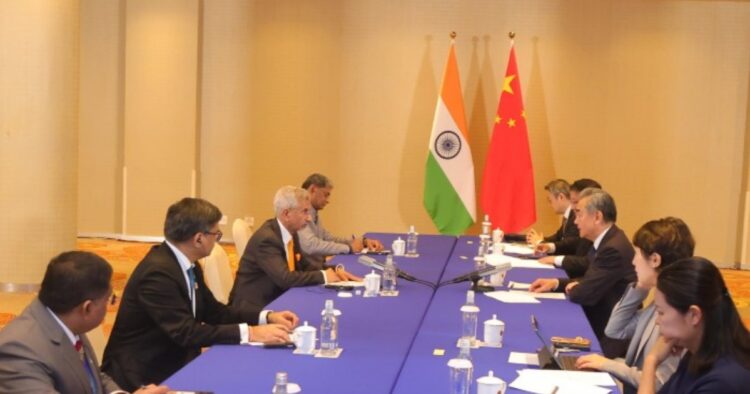In a significant diplomatic development, India and China have engaged in a series of discussions aimed at resolving longstanding border disputes and restoring direct flights between the two capitals, issuing visas for journalists and think tanks, and sharing trans-border river data, enhancing bilateral cooperation. These talks underscore India’s unwavering commitment to safeguarding its national interests while promoting regional stability.
Resumption of Cross-Border Initiatives
This comes after, Indian Foreign Secretary Vikram Misri met with Chinese Foreign Minister Wang Yi in Beijing earlier this year, on January 27. The discussions focused on resuming the Kailash Mansarovar Yatra, a pilgrimage of great spiritual significance to Indian devotees, which had been suspended since 2020.
Both sides agreed to restart this pilgrimage in the summer of 2025, reflecting India’s dedication to preserving its cultural and religious practices. Additionally, they concurred on the necessity of sharing hydrological data on trans-border rivers, a move that aligns with India’s emphasis on equitable resource management.
The India-China thaw began after the diplomats of both sides held in rigorous talks, culminating in the gradual disengagement of troops in Demchok and Despang. As a sign of improving ties, Indian and Chinese troops exchanged sweets at multiple border points along the LAC on Diwali.
High-Level Engagements and Strategic Dialogues
The momentum for these developments was set during a pivotal meeting in December 2024 between India’s National Security Advisor, Ajit Doval, and Chinese Foreign Minister Wang Yi. This marked the first formal dialogue between the Special Representatives in five years, highlighting India’s proactive approach to addressing border tensions. The discussions resulted in a six-point consensus, including commitments to maintain peace along the Line of Actual Control (LAC), resume border trade, and enhance people-to-people exchanges.
Both nations acknowledged the importance of maintaining peace and tranquility in border areas as a foundation for broader bilateral relations. The agreements reached reflect India’s strategic intent to address immediate concerns while laying the groundwork for long-term solutions. The resumption of mechanisms such as the Working Mechanism for Consultation and Coordination (WMCC) on border affairs exemplifies India’s dedication to structured and continuous dialogue.
India’s approach in these negotiations demonstrates a balance between firmness on core issues and openness to dialogue. By prioritizing national interests and cultural values, India reinforces its position as a nation committed to peaceful coexistence without compromising its sovereignty. The recent engagements with China are a testament to India’s diplomatic acumen, ensuring that its strategic and economic interests are robustly represented on the global stage.
In conclusion, India’s recent dialogues with China reflect a strategic blend of assertiveness and diplomacy. By addressing critical issues such as border management and cultural exchanges, India continues to uphold its national interests while contributing to regional stability.

















Comments